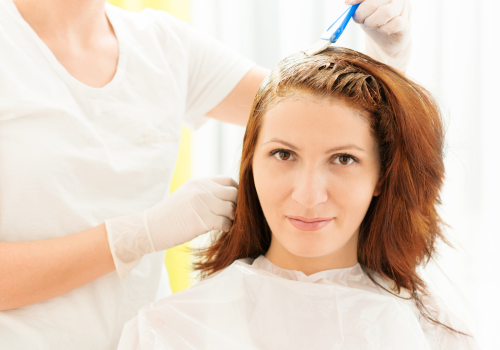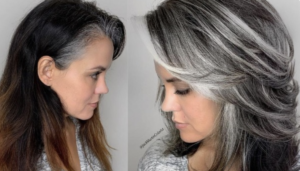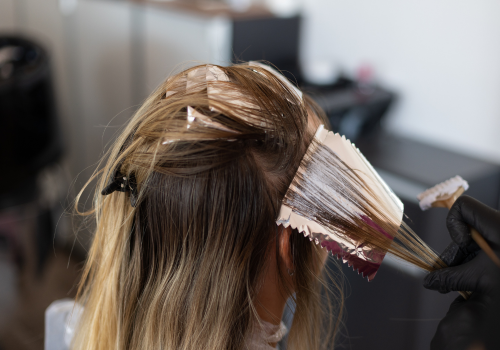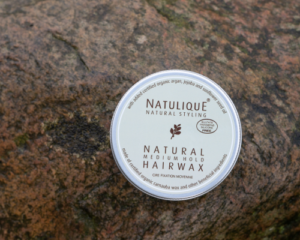Introduction
Excessive use of hair colorations has become a common practice in modern society. More and more people are opting for these chemicals to change the color of their hair as they see fit. However, this habit can have harmful consequences for hair and scalp health.
Impact of coloring on hair health
Hair colorants often contain harsh chemicals such as ammonia and hydrogen peroxide, which can damage the hair's natural structure. These chemicals can cause hair to dry out, become brittle and even fall out prematurely. What's more, excessive use of colorants can lead to scalp irritation, itching and skin allergies.
The importance of caring for your natural hair
Taking care of your natural hair is essential to maintaining its health and vitality. Untreated hair is generally stronger, shinier and less prone to damage. By stopping coloring your hair, you allow it to return to its natural state and recover from the damage caused by chemicals. What's more, by opting for natural, gentle hair care products, we encourage hair and scalp regeneration.
Understanding the risks of hair coloring
1. Harmful ingredients in hair colorants
Hair colorants often contain harsh chemicals such as ammonia, hydrogen peroxide, sulfates and parabens. These chemicals are used to open hair cuticles and allow color pigments to penetrate the hair fiber. However, they can also damage the hair's natural structure and have adverse effects on scalp health.
2. Health risks associated with excessive coloring
Excessive use of hair color can lead to a variety of health problems. Firstly, the chemicals present in the colorants can irritate the scalpThe result is itching, redness and irritation. What's more, some people can develop skin allergies in reaction to the ingredients in colorants, which may require medical treatment.
Excessive hair coloring can also increase the risk of hair loss. Aggressive chemicals can weaken hair follicles, making hair more prone to breakage and loss. Hair loss can be temporary or permanent, depending on the severity of the damage caused.
3. Environmental impact of hair colorants
In addition to the risks to human health, hair color also has a negative impact on the environment. The chemical substances present in colorants can contaminate water and soil when rinsed off during the coloring process, or when the hair is washed. hair wash after coloring. This pollution can have harmful effects on water and environmental quality, as well as on biodiversity.

Taking care of natural hair
1. Natural hair care routine
Adopting a natural hair care routine is essential to maintaining the health and beauty of our hair. Moisturization and nutrition play a crucial role in this routine. Be sure to use natural and organic hair care products that are free from harsh chemicals such as sulfates, parabens and silicones. Opt for gentle shampoos and conditioners based on natural ingredients such as coconut oil, aloe vera and essential oils.
In addition, regular moisturizing of the hair is essential to maintain its elasticity and shine. Use moisturizing hair masks based on natural ingredients such as honey, avocado and yogurt to deeply nourish your hair and restore its vitality.
2. Tips for restoring the health of damaged hair
If your hair is already damaged by excessive use of hair colorationsIt's important to take steps to repair and revitalize them. Natural treatments can be very effective in repairing damage caused by coloring. Argan oil, for example, is rich in fatty acids and vitamin E, making it an excellent treatment for nourishing damaged hair. damaged hair and restore vitality. Gently massage argan oil into your hair and leave on for at least an hour before rinsing.
What's more, preventing future damage is just as important as repairing existing damage. Limit the use of heated products such as straightening irons and hair dryers, as excessive heat can damage hair.
Protect your hair from UV rays by wearing a hat or using hair care products containing sunscreen.
The transition to natural hair
1. Steps to stop colorations
Transition planning Before you stop coloring, take the time to plan your transition. Determine the method you'd like to use to return to your natural hair, whether by gradually cutting out colored hair or opting for a semi-permanent color that's closer to your natural color.
Root management during transition During the transition, it's normal for your roots to grow back with your natural color. To manage this phase, consider using styling products such as powders to camouflage roots, or headbands and scarves to conceal them.
2. Alternative hairstyles
Hairstyle ideas to hide roots Hairstyles can be your ally during the transition. Opt for hairstyles that highlight your hair while masking roots, such as buns, braids, ponytails, or voluminous styles that add volume and texture to your hair.
Accessories for embellishing natural hair in transition Accessories: Accessories can add a touch of elegance to your transitioning hair. Try headbands, clips, decorative hair clips, turbans or colorful scarves to accentuate your style while camouflaging growing roots.

Tips for maintaining healthy natural hair
Eat a balanced diet
For natural hair A balanced diet is essential for healthy hair. Certain nutrients are particularly important for healthy hair, including proteins, essential fatty acids, vitamins A, C, D and E, and minerals such as zinc, iron and selenium. Be sure to include foods rich in these nutrients in your diet, such as oily fish, eggs, colorful fruits and vegetables, legumes, nuts and seeds.
On the other hand, certain foods can contribute to hair damage and brittleness. Avoid foods rich in refined sugars, saturated fats and artificial additives, which can weaken hair and compromise its health.
5.2 Apply gentle styling techniques
To preserve the health of your natural hair, it's important to limit the use of heat and heated styling tools such as straightening irons and hair dryers. Excessive heat can damage the hair cuticle, making it more prone to breakage and dryness. Instead, opt for heat-free styling techniques such as :
- Air drying To avoid exposure to the heat of a hairdryer, let your hair air-dry naturally whenever possible.
- Protective hairstyles Hairstyles: Opt for hairstyles that protect your hair, such as braids, chignons and twists, which reduce manipulation and tension on the hair.
- Heatless styling products Use heat-free styling products such as mousses, gels and texturizing sprays to create styles without the use of heat.
Conclusion
The transition to natural hair offers many benefits for hair health and beauty. By summarizing these benefits, we can better understand the importance of this process and be encouraged to embrace our natural beauty.
By opting for natural hair, we allow our hair to return to its natural state, avoiding the damage caused by the harsh chemicals found in hair colorants. This transition promotes the health of our hair, making it stronger, shinier and more resistant to future damage.
In conclusion, the transition to natural hair is a journey towards health, beauty and self-acceptance. By choosing this path, we honor our hair and ourselves, and commit to nurturing our hair well-being and self-confidence. Let's embrace our natural beauty and celebrate the diversity of our hair with pride and gratitude.



